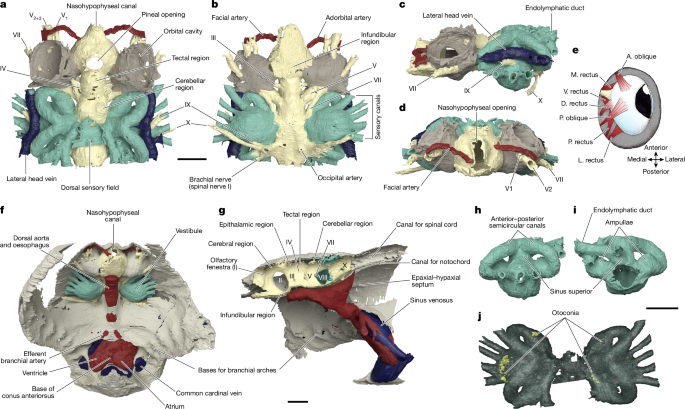
"The standard narrative of jawed vertebrate origins shows a shift from benthic grazers to nektonic predators, requiring notable anatomical adaptations such as enhanced sensory systems."
"Analysis of Norselaspis glacialis reveals derived traits that indicate the evolution of gnathostome characteristics at a head-trunk interface, challenging traditional understandings of vertebrate evolution."
"The inner ear of Norselaspis presents sensory adaptations that appeared before jaws evolved, implying earlier developmental changes in sensory sophistication among jawless vertebrates."
"The study confirms a unique feature in Norselaspis: the most anterior trunk nerve extends to the pectoral fin, highlighting anatomical distinctions among vertebrates."
Research on Norselaspis glacialis reveals derived traits that reflect early features of jawed vertebrates, bridging the anatomical gap between jawless and jawed forms. Significant adaptations were noted in the sensory organs and cardiac system, indicating evolutionary advancements prior to the development of jaws. The inner ear showcased larger structures related to sensing motion and balance, predating the jaw's evolution. Furthermore, the nerve extending into the pectoral fin suggests unique anatomical characteristics that diverge from earlier assumptions regarding vertebrate morphogenesis. The findings imply a complex interrelationship between sensory enhancement and jaw evolution in vertebrate history.
Read at www.nature.com
Unable to calculate read time
Collection
[
|
...
]